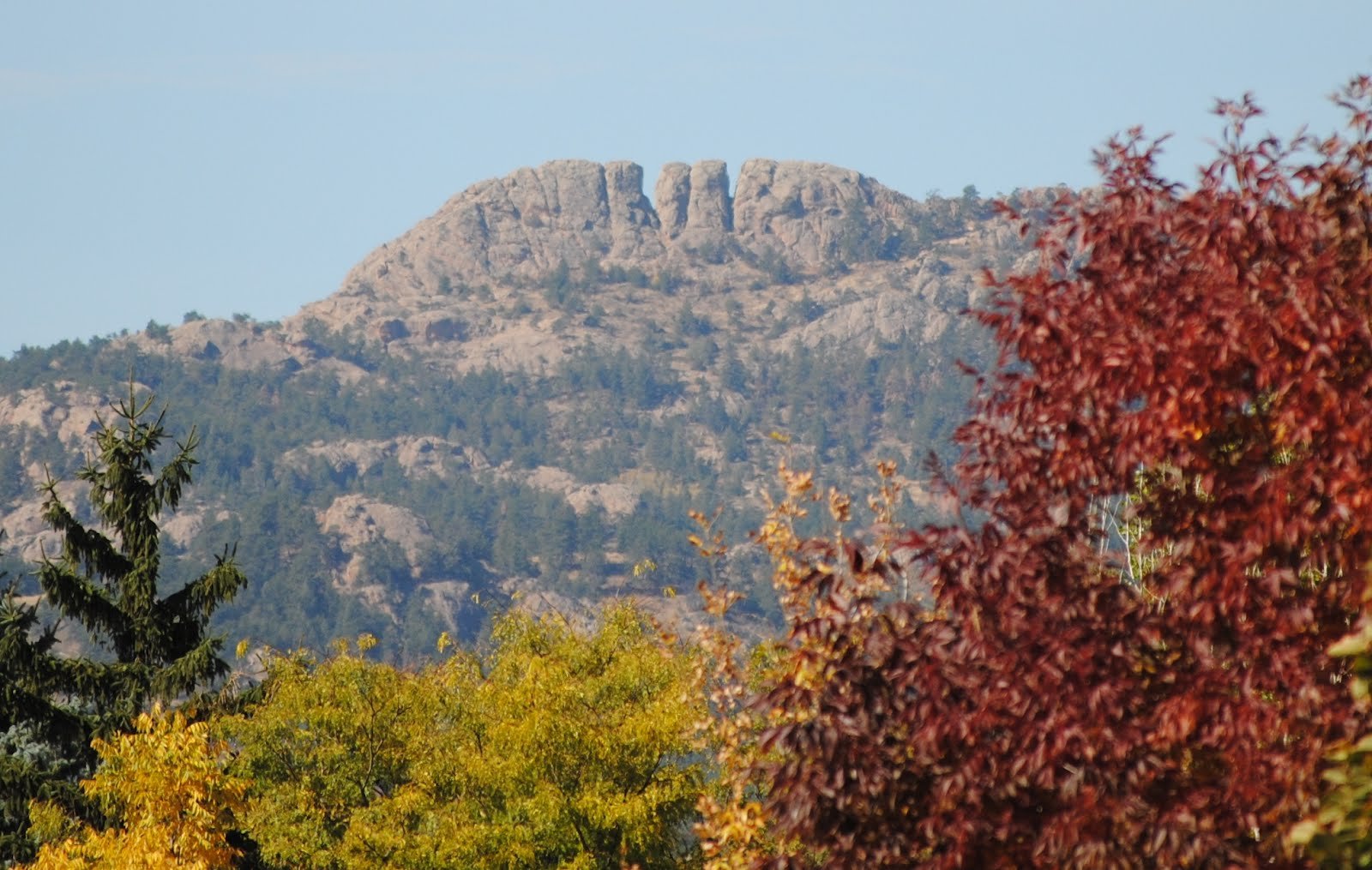It’s nearly impossible to enjoy the Horsetooth Half Marathon race course without getting a picturesque view of Horsetooth Rock, a landmark visible from most of Fort Collins. The story of how Horsetooth Rock got its name is a great example of how some of a community’s most enduring stories can be more complex than they first appear.
According to the Fort Collins Museum of Discovery in a study funded by the U.S. National Park Service, Horsetooth Rock was named, simply, because early Euro-American settlers saw the rock and thought it looked like a horse’s tooth.
However, for many generations, residents of Fort Collins and the surrounding area have grown up hearing another story, “The Legend of Horsetooth Rock.” The story goes: Long ago, before Horsetooth Mountain existed, the Valley of Contentment sat at the base of the mountains and the Indians who lived in the valley were happy and peaceful. But there was a giant who wanted the valley for himself, looking down into it from his home in the mountains. Stronger and more powerful than the Indians, the giant forbade anyone to live in the valley, banishing the people from their home.
The Indians called upon their most powerful chief, Chief Manumoku, to lead them against the giant. At first, it seemed hopeless, but then Manumoku learned that, during the full moon, the giant slept with his heart exposed outside of his body, guarded by a huge nighthawk. At the next full moon, Manumoku lured the nighthawk away from the sleeping giant and, reaching up into the sky, pulled a glittering tomahawk down from the stars. Raising the tomahawk above his head, Manumoku brought the blade onto the giant’s heart, cleaving it in two. But the giant was not dead. So Manumoku raised the tomahawk two more times, striking deep on the right and left sides of the giant’s heart. With that the giant died; his body and heart turning to granite stained red with the blood that flowed out of him and becoming Horsetooth Mountain.
This story is often presented, in and around Fort Collins, as an authentic Native American story. There’s just one problem: it’s not.
To the best of historians’ knowledge, the story was invented by Hugo Frey, a white settler who lived in Fort Collins in the early 20th century. At that time, it was common for Euro-Americans to appropriate and romanticize Indigenous cultures and create legends and histories that they then attributed to tribes. Hugo Frey’s story appears to draw heavily from the time he spent in the South Pacific. (The name “Manumoku” is linguistically more Polynesian than western Native American.) No Native American tribe with a historical presence in northern Colorado has ever claimed the story as their own.
As Colorado State University acknowledges, the land called Fort Collins is the traditional and ancestral homelands of the Arapaho, Cheyenne, and Ute Nations and peoples. This was also a site of trade, gathering, and healing for numerous other Native tribes. These tribes and others have cared for the land
Horsetooth Rock sits on for millennia.
As you enjoy running the Horsetooth Half Marathon, we encourage you to help dispel the false story about Horsetooth Rock and to learn the real histories and presence of this land’s original stewards. Learn More:
Colorado State University Native American Cultural Center – CSU’s NACC was established in 1979 to ensure a successful educational experience for students. The office embraces and encourages a supportive environment based on the traditions and cultures of Native American peoples.
Native Land Digital – Native Land Digital strives to create and foster conversations about the history of colonialism, Indigenous ways of knowing, and settler-Indigenous relations, through educational resources, such as the interactive online map that helps visitors see whose lands they occupy.
Northern Colorado Intertribal Powwow Association – NCIPA is a nonprofit organization created in 1992 to provide opportunities for the Northern Colorado communities to share and participate in Native American cultures through events including the Annual Powwow each Spring.
Running on Native Lands – Running on Native Lands works to connect race staff with local Indigenous communities and encourage race attendees to rethink the way we view lands and our connection with them by recognizing that the lands we are privileged to run on are stolen. This initiative works to make the running community more accessible, supportive, inclusive, and visible.
The majority of this information was sourced from the Trails of Northern Colorado project by the Fort Collins Museum of Discovery, funded by a Preserve America grant from the U.S. National Park Service.

